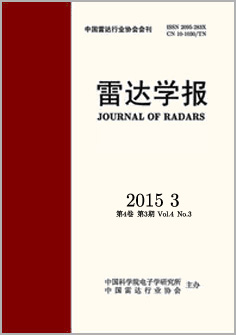- Home
- Articles & Issues
-
Data
- Dataset of Radar Detecting Sea
- SAR Dataset
- SARGroundObjectsTypes
- SARMV3D
- AIRSAT Constellation SAR Land Cover Classification Dataset
- 3DRIED
- UWB-HA4D
- LLS-LFMCWR
- FAIR-CSAR
- MSAR
- SDD-SAR
- FUSAR
- SpaceborneSAR3Dimaging
- Sea-land Segmentation
- SAR Multi-domain Ship Detection Dataset
- SAR-Airport
- Hilly and mountainous farmland time-series SAR and ground quadrat dataset
- SAR images for interference detection and suppression
- HP-SAR Evaluation & Analytical Dataset
- GDHuiYan-ATRNet
- Multi-System Maritime Low Observable Target Dataset
- DatasetinthePaper
- DatasetintheCompetition
- Report
- Course
- About
- Publish
- Editorial Board
- Chinese
| Citation: | Yang Qian, Wei Bing, Li Lin-qian, Ge De-biao. Preliminary Research on RCS Using DGTD[J]. Journal of Radars, 2015, 4(3): 361-366. doi: 10.12000/JR15052 |
Preliminary Research on RCS Using DGTD
DOI: 10.12000/JR15052 CSTR: 32380.14.JR15052
-
Abstract
Discontinuous Galerkin Time Domain (DGTD) method appears to be very promising which combines the advantages of unstructured mesh in Finite Element Time Domain (FETD) and explicit scheme in Finite Difference Time Domain (FDTD). This paper first describes principle of DGTD base on vector basis function. Secondly, Specific method for incident plane wave is given for scattering problem. At last, the monostatic Radar Cross Section (RCS) of PEC sphere, medium sphere and the PEC bullet are computed by DGTD method. The numerical results illustrate the feasibility and correctness of the presented scheme. The study of this paper is a foundation for analyzing the RCS of complex target. -

-
References
[1] Ji X, Lu T, Cai W, et al.. Discontinuous Galerkin Time Domain (DGTD) methods for the study of 2-D waveguidecoupled microring resonators[J]. Journal of Lightwave Technology, 2005, 23(11): 3864-3874.[2] Shu C W. A brief survey on discontinuous Galerkin methods in computational fluid dynamics[J]. Advances in Mechanics, 2013, 43(6): 541-553.[3] Gedney S D, Kramer T, Luo C, et al.. The Discontinuous Galerkin Finite Element Time Domainmethod(DGFETD)[C]. IEEE International Symposium on Electromagnetic Compatibility, 2008: 1-4.[4] Alvarez J. A Discontinuous Galerkin Finite Element Method for the Time-Domain Solution of Maxwell Equations[D]. [Ph.D. dissertation], University of Granada (Spain), 2013: 31-39.[5] Lee Jin-Fa, Lee Robert, and Cangellaris Andreas. Timedomain finite-element methods[J]. IEEE Transactions on Antennas and Propagation, 1997, 45(3): 430-442.[6] Jin Jian-ming.The Finite Element Method in Electromagnetic[M]. New York: John Wiley Sons, 2002: 22-23.[7] Riley D J, Jin Jian-ming, Lou Z, et al.. Total-and scatteredfield decomposition technique for the finite-element timedomain method[J]. IEEE Transactions on Antennas and Propagation, 2006, 54(1): 35-41.[8] Shankar V, Mohammadian A H, and Hall W F. A timedomain, finite-volume treatment for the Maxwell equations[J]. Electromagnetics, 1990, 10(1/2): 127-145.[9] Bossavit A. Whitney forms: a class of finite elements for three-dimensional computations in electromagnetism[J]. IEE Proceedings A (Physical Science, Measurement and Instrumentation, Management and Education, Reviews), 1988, 135(8): 493-500.[10] 葛德彪, 魏兵. 电磁波时域计算方法(下册)[M]. 西安电子科技 大学出版社, 2014: 188-191. Ge D B and Wei B. Time Domain Computational Method for Electromagnetic Wave (Volume II)[M]. Xi'an: Xidian University Press, 2014: 188-191. -
Proportional views



 Submit Manuscript
Submit Manuscript Peer Review
Peer Review Editor Work
Editor Work




 DownLoad:
DownLoad: